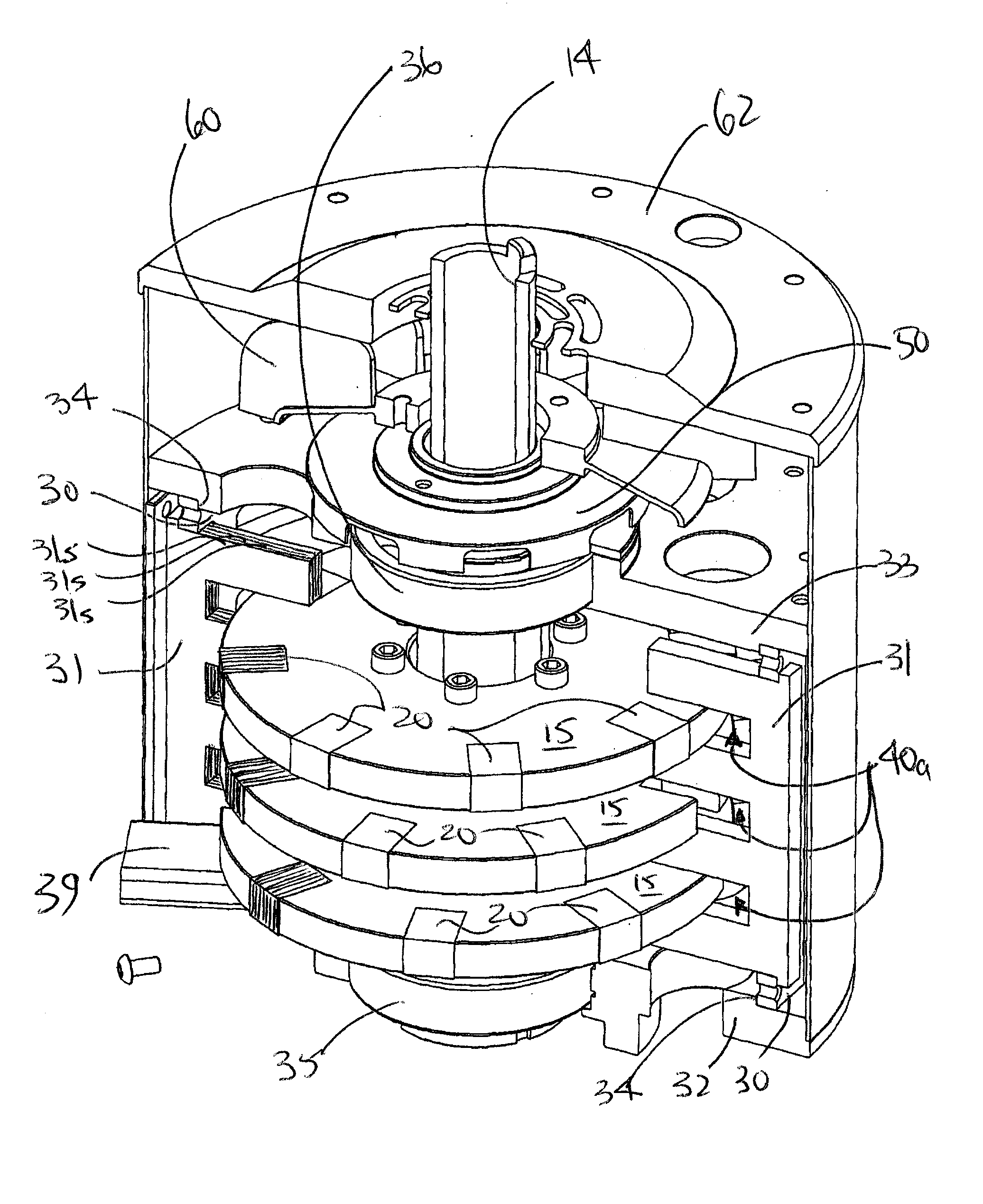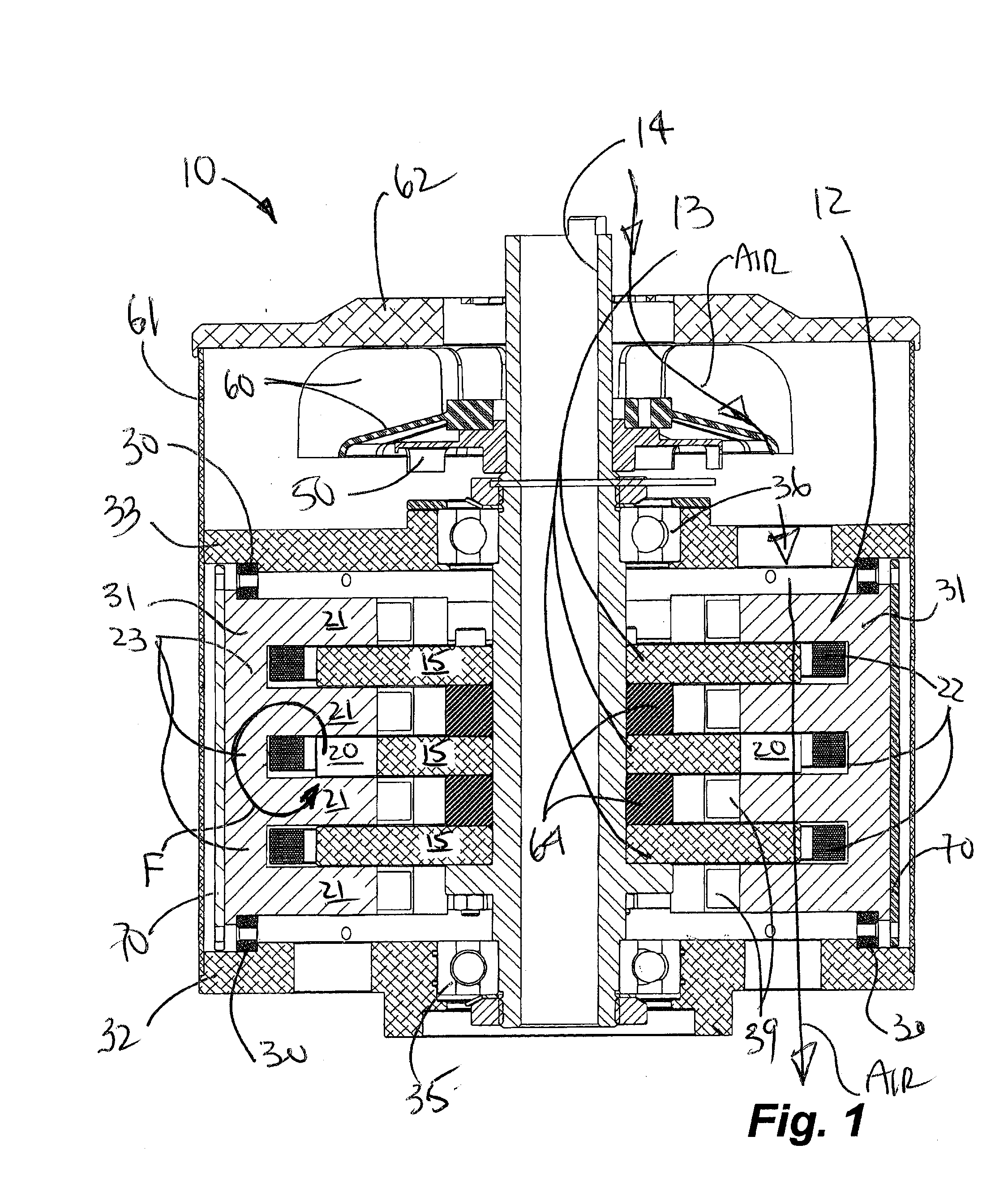Axial flux switched reluctance motor and methods of manufacture
a switched reluctance motor and axial flux technology, applied in the direction of dynamo-electric machines, electrical apparatus, magnetic circuits, etc., can solve the problems of complex copper windings of coils, noise of cylindrical switched reluctance motors, and loss of copper, so as to minimize the use of electrical steel, minimize the use of copper, and simplify the effect of windings
- Summary
- Abstract
- Description
- Claims
- Application Information
AI Technical Summary
Benefits of technology
Problems solved by technology
Method used
Image
Examples
Embodiment Construction
[0029]As shown in cross-section FIG. 1 and fully assembled in FIG. 3, an axial flux electromotive generating device or motor 10 using switch reluctance control has a stator arrangement 12 and a rotor 13. The principles of switched reluctance motors are known to those of ordinary skill in the art. Applicant has provided a heretofore unknown and advantageous arrangement of stator arrangement 12 and rotor 13.
[0030]The term “switched reluctance” has now become the popular term for a class of electric machine. The topology of conventional switched reluctance motors (SRM) implement phase coils mounted around diametrically opposite stator poles which are radially spaced about a rotor. A conventional SRM rotor has a plurality of radially extending poles. Energizing of a stator phase will cause a rotor pole to move into alignment with corresponding stator poles, thereby minimizing the reluctance of the magnetic flux path. Rotor position information is used to control energizing of each phase...
PUM
| Property | Measurement | Unit |
|---|---|---|
| magnetic field | aaaaa | aaaaa |
| axial height | aaaaa | aaaaa |
| radial depth | aaaaa | aaaaa |
Abstract
Description
Claims
Application Information
 Login to View More
Login to View More - R&D
- Intellectual Property
- Life Sciences
- Materials
- Tech Scout
- Unparalleled Data Quality
- Higher Quality Content
- 60% Fewer Hallucinations
Browse by: Latest US Patents, China's latest patents, Technical Efficacy Thesaurus, Application Domain, Technology Topic, Popular Technical Reports.
© 2025 PatSnap. All rights reserved.Legal|Privacy policy|Modern Slavery Act Transparency Statement|Sitemap|About US| Contact US: help@patsnap.com



